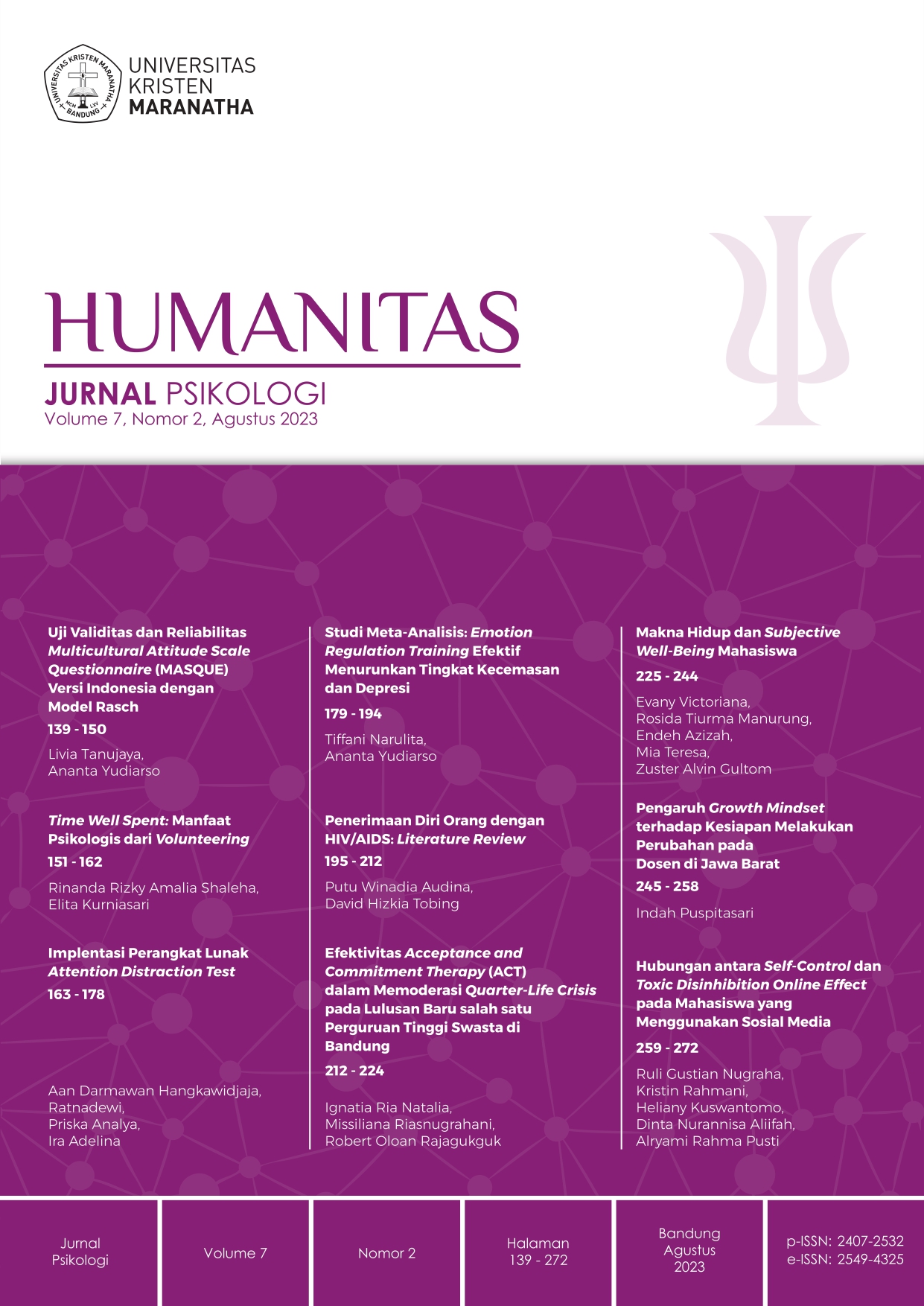The Implementation of Attention Distraction Test Software
Main Article Content
Abstract
Downloads
Article Details

This work is licensed under a Creative Commons Attribution-NonCommercial 4.0 International License.
References
Capovilla, A. G. S., Montiel, J. M., Macedo, E. C., & Charin, S. (2005). Computerized Stroop Test.
Christianty, A. R., Ramadhanti, A. ., Arsanty, D. ., Citra, I. ., Phalitamadana, M., & Kristhi, N. . (2015). Pengaruh Distraksi terhadap Atensi Mahasiswa Binus.
Fanuel, M., & Yan, K. (2014). Panduan Praktikum Psikologi Dasar (Diktat).
Forster, S., & Lavie, N. (2014). Distracted by your mind? Individual differences in distractibility predict mind wandering. Journal of Experimental Psychology: Learning Memory and Cognition, 40(1), 251–260. https://doi.org/10.1037/a0034108
Gelasca, E. D., Tomasic, D., & Ebrahimi, T. (2005). Which colors best catch your eyes: a subjective study of color saliency. First International Workshop on Video Processing and Quality Metrics for Consumer Electronics VPQM-05, January, 16. %5CLibrary%5CGelascaTomasic2005.pdf
Geva, R., Zivan, M., Warsha, A., & Olchik, D. (2013). Alerting, orienting or executive attention networks: Differential patters of pupil dilations. Frontiers in Behavioral Neuroscience, 7(OCT), 1–11. https://doi.org/10.3389/fnbeh.2013.00145
Grahanantyo, Y. ., & Kusrohmaniah, S. (2018). Pengaruh Mindfulness Meditation Training terhadap Atensi Selektif pada Siswa SMP. Gadjah Mada Journal of Professional Psychology (GamaJPP), 6(1), 30. https://doi.org/10.22146/gamajpp.53189
Kartono, K. (1996). Psikologi Umum. Mandar Maju.
Krisnanda, M. A., Hasianna, S. T., & Limyati, Y. (2020). Peningkatan Fungsi Atensi dan Memori Jangka Pendek pada Wanita Dewasa Muda dengan Ansietas setelah Terapi Mewarnai. Journal of Medicine and Health, 2(5). https://doi.org/10.28932/jmh.v2i5.2030
Meier, M. E. (2021). Testing the attention-distractibility trait these associations are distinct from those found among. March, 1490–1504.
Neumann, E., & DeSchepper, B. G. (1991). Costs and Benefits of Target Activation and Distractor Inhibition in Selective Attention. Journal of Experimental Psychology: Learning, Memory, and Cognition, 17(6), 1136–1145. https://doi.org/10.1037/0278-7393.17.6.1136
Pinnow, D. A., Hubbard, H. I., & Meulenbroek, P. A. (2021). Computer- Assessment of Attention and Memory Utilizing Ecologically Valid Distractions: A Scoping Review. Frontiers in Virtual Reality, 2(July), 1–13. https://doi.org/10.3389/frvir.2021.685921
Redick, T. S., & Engle, R. W. (2006). Working memory capacity and attention network test performance. Applied Cognitive Psychology, 20(5), 713–721. https://doi.org/10.1002/acp.1224
Stemberg, R. J., & Mio, J. S. (2008). Cognitive psychology. In Cengage Learning (5th ed.). Cengage Learning.
Sternberg, R.J, & Mio, J. (2008). Cognitive Psychology (5th ed.). Cengage Learning, 2008.
Sternberg, Robert J., & Sternberg, K. (2012). Cognitive Psychology. Cencage Learning.
Stokes, J. D., Rizzo, A., Geng, J. J., & Schweitzer, J. B. (2022). Measuring Attentional Distraction in Children With ADHD Using Virtual Reality Technology With Eye-Tracking. Frontiers in Virtual Reality, 3. https://doi.org/10.3389/frvir.2022.855895
Strom, P. S., Strom, R. D., Sindel-Arrington, T., & Rude, R. V. (2023). Student Attention and Distraction in Community College. Journal of Educational and Developmental Psychology, 13(1), 41. https://doi.org/10.5539/jedp.v13n1p41
Walgito, B. (2010). Pengantar psikologi umum (Edisi ke e). Andi Offset.

